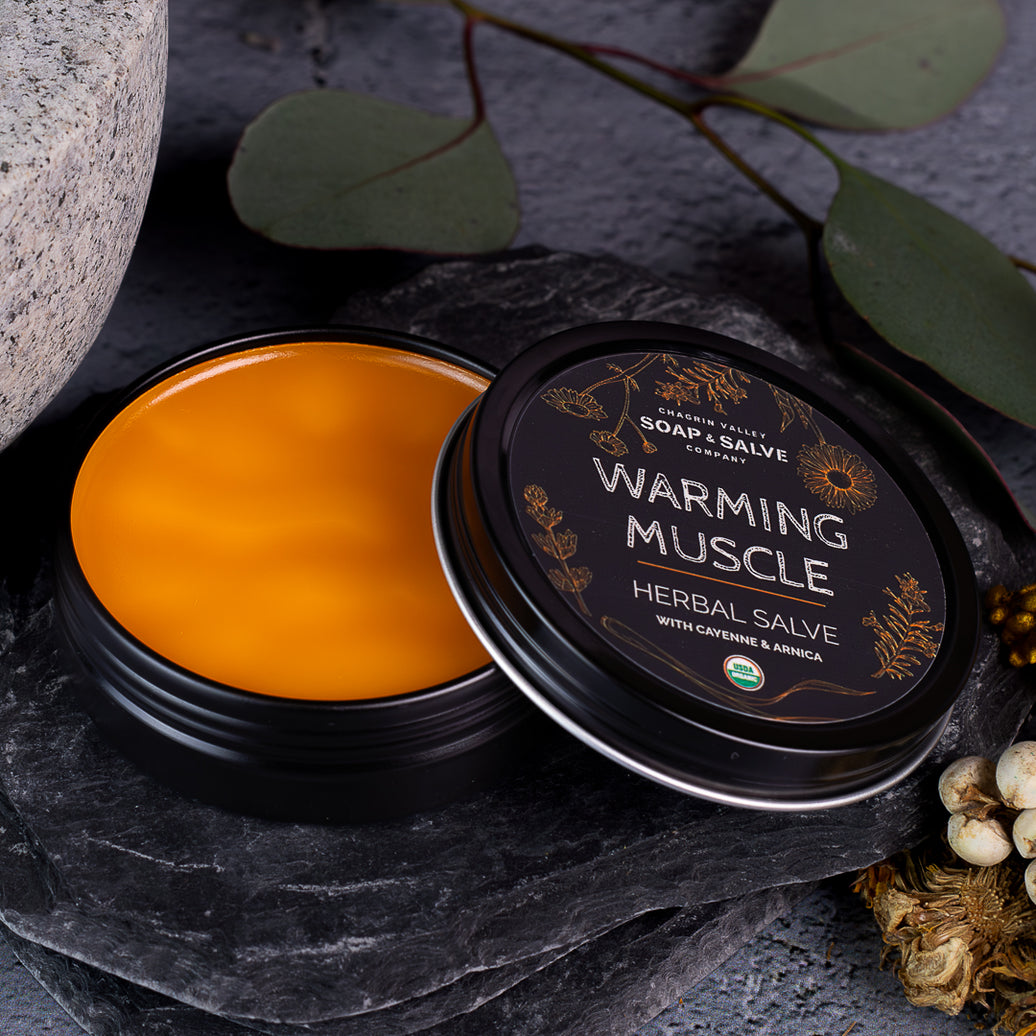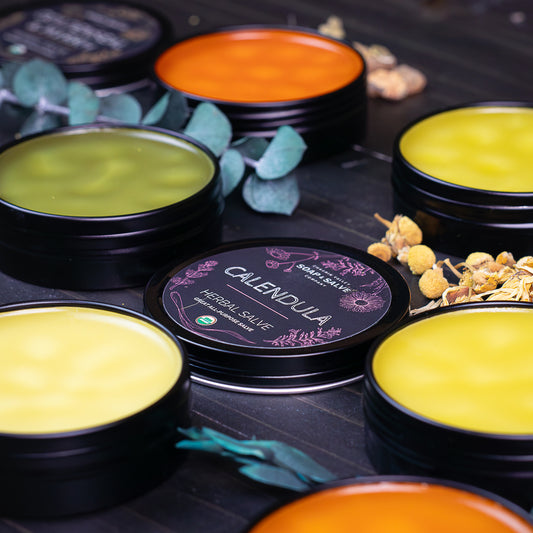Topical Cayenne Pepper Can Help Ease Pain
What is Cayenne Pepper
Cayenne Pepper, Capsicum annuum, a small-fruited pepper, originates from South America and has been cultivated for use for at least 7,000 years. The genus Capsicum is a member of the nightshade family which includes other types of fruits such as peppers, tomatoes, eggplant, and also potatoes.
 What most people today call “peppers” are all part of the plant genus Capsicum.
What most people today call “peppers” are all part of the plant genus Capsicum.
Early explorers brought seeds from South America back to Europe and they quickly spread around the world often as an alternative to black pepper which was very expensive at that time.
So how did we get so many types of peppers? Cross-pollination, whether natural or through human intervention has created thousands of varieties of Capsicum.
The genus of the cayenne pepper, “annum,” includes bell peppers, sweet/Italian peppers, serrano, paprika, and jalapeños.
You are probably familiar with Cayenne pepper as an aromatic, hot, and spicy condiment.
But it does much more than just flavor your favorite recipes, it is also gaining popularity for its healing and pain-relieving properties that have been used medicinally for thousands of years.
Before discussing the topical applications of Cayenne let's learn a bit about "spicy peppers."
What Makes a Hot Pepper "Taste" Hot?
The “heat” in hot peppers comes from compounds known as capsaicinoids, the most well-known of which is capsaicin. The more capsaicin, the hotter the pepper. The amount of capsaicin varies quite a bit among species and varieties.
 The tongue has millions of microscopic receptors that allow us to taste flavors.
The tongue has millions of microscopic receptors that allow us to taste flavors.
We have the five basic taste receptors, sweet, salty, bitter, sour, and umami. Notice that there is no taste bud for spicy.
So what exactly are we tasting? According to Dr. Barry Green of The John B. Pierce Laboratory, "The answer hinges on the fact that spicy foods excite the receptors in the skin that normally respond to heat.” Source
Besides taste buds, our tongue also has receptors that enable us to feel pain—these are called VR1 receptors. The purpose of these pain receptors is to detect real “heat” to prevent us from eating food or touching things that will cause a physical burn.
Capsaicin bypasses our taste buds and binds to these sensory pain receptors on the tongue so we actually “feel” the heat of spice.
“Spiciness” is not a flavor that we taste, it is actually a sensation of pain.
When these receptors, clustered on our tongue, mouth, and skin are activated by capsaicin, they send a signal to your brain, which interprets it as something physically HOT. These are the same receptors that tell your brain, “the scalding hot coffee is burning your tongue.”
There is a difference though, while hot coffee can seriously burn your mouth, hot peppers will not when you ingest the amounts we typically eat in food.
There is nothing actually "hot" about spicy food.
Although the “pain” we perceive is not pain due to a hot temperature, the capsaicin produces the illusion of heat which actually tricks and confuses your pain receptors which send messages to your brain that trigger the fire alarm.
While the capsaicin is not actually burning you, your deceived brain sends messages to the body to cool itself down by sweating, panting, etc.
These receptors exist all over your body, which also explains why you may have a burning sensation on your fingers after chopping jalapeno or serrano peppers.
Also note that while water may put out a "true fire" in your mouth, it will just spread "spicy" heat. Capsaicin only dissolves in fats, oils, and alcohol. Dairy products like milk or ice cream and fatty foods like peanut butter or avocados are much more helpful to ease that mouth-on-fire feeling.
How Do We Measure the "Heat" of Peppers?
One method of measuring the “heat” of a pepper, technically the concentration of capsaicin, is Scoville heat units (SHU). The scale is named after its creator, American pharmacist Wilbur Scoville, who developed the test back in 1912.
 Scoville heat units measure “pepper heat” by figuring out how much sugar water needs to be diluted into a mash of a specific pepper, in a 1:1 ratio, before you no longer feel the heat.
Scoville heat units measure “pepper heat” by figuring out how much sugar water needs to be diluted into a mash of a specific pepper, in a 1:1 ratio, before you no longer feel the heat.
For example, if you have one cup of mashed cayenne peppers, how many cups of sugar water are needed to dilute it until you no longer taste any heat?
If the cayenne peppers are labeled 30,000 – 50,000 SHU that means it would require anywhere from 30,000 – 50,000 cups of sugar-water to dilute it to zero heat.
And just how did they determine when they reached zero heat? Back in the day, human taste testers were needed.
Although the measure of Scoville Heat Units is still widely used, it no longer relies on human taste buds. Besides the fact that I cannot even imagine who would want that job, there were other problems with this testing method. For example, it is obviously very subjective, and also after tasting many batches of diluted peppers the taste buds became desensitized.
Today they used what is called “high-performance liquid chromatography” and covert the measurements into Scoville units. Bell peppers have 0 Scoville units and habaneros have more than 100,000.
What Does All of This Have to do With Topical Pain Relief?
Today, you will often find capsaicin as an ingredient in topical ointments and salves reported to help ease pain caused by muscle aches, bruises, and even arthritis.
Although for centuries, extracts of hot peppers have been known as effective folk remedies to ease toothaches and other types of pain, a complete understanding of how capsaicin works to relieve pain remains unclear.
Scientists have found evidence that capsaicin acts against pain by affecting a chemical known as Substance P.
Substance P is a neurotransmitter that helps transmit pain signals from sensory nerve fibers to the brain. It is released when tissues are damaged and is part of the system our bodies use to perceive pain and injury. Basically, when a person experiences pain, the body sends this chemical messenger to the brain and you feel pain.
When applied topically, capsaicin tricks the nervous system into thinking that an injury has occurred, stimulating the nerve cells to release Substance P. The result is a sensation of excess warmth or burning.
 When capsaicin ointment, like our Warming Muscle Salve, is applied regularly to a particular part of the body, substance P (and possibly other chemical pain messengers) becomes depleted in that area. As the supply of Substance P in the nerve cell decreases fewer pain signals will be transmitted to the brain.
When capsaicin ointment, like our Warming Muscle Salve, is applied regularly to a particular part of the body, substance P (and possibly other chemical pain messengers) becomes depleted in that area. As the supply of Substance P in the nerve cell decreases fewer pain signals will be transmitted to the brain.
This minimizes pain while providing a warm feeling to the skin and underlying tissue. I know it seems odd that something that “causes” or stimulates painful sensations might also make the pain go away, but that is the way it works.
The human body is good at repairing itself and eventually, the nerve endings accumulate more Substance P and will once again send pain alerts to the brain.
As a result, we know that capsaicin provides only temporary relief. To be effective the topical application must be done more than once a day.
Unfortunately, the research concerning the effectiveness of capsaicin as a pain reliever is mixed.
I could cite numerous scientific studies that demonstrate a significant decrease in musculoskeletal and neuropathic pain with the topical application of capsaicin. But, I could also cite studies that show the effect is only moderate or even minimal. It is also possible that topical capsaicin may work better for some than others.
How To Use a Capsiacin Salve
Apply enough to cover the painful area, and rub it into your skin until it disappears. Then wash your hands immediately to avoid accidentally getting it into your eyes, nose, or mouth.
It is not uncommon to experience a slight burning sensation when applied to the skin. With this in mind, cayenne ointments should never be used on open wounds or broken or irritated skin. Also, do not use a heating pad on the area being treated.
Topical capsaicin is best suited for pain associated with arthritis, sore muscles, neuralgia, and sometimes headaches. It may take days or even a week or so before you feel the full effect. However, if you do not notice any improvement after a few weeks, stop using capsaicin.
Before you use it on a large area, do a patch test to make sure you are not sensitive to any of the ingredients.
Have you had any experience with topical capsaicin? Let us know how it worked for you.



